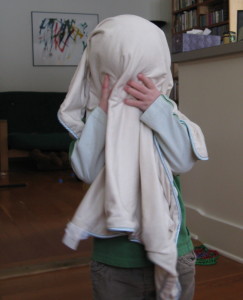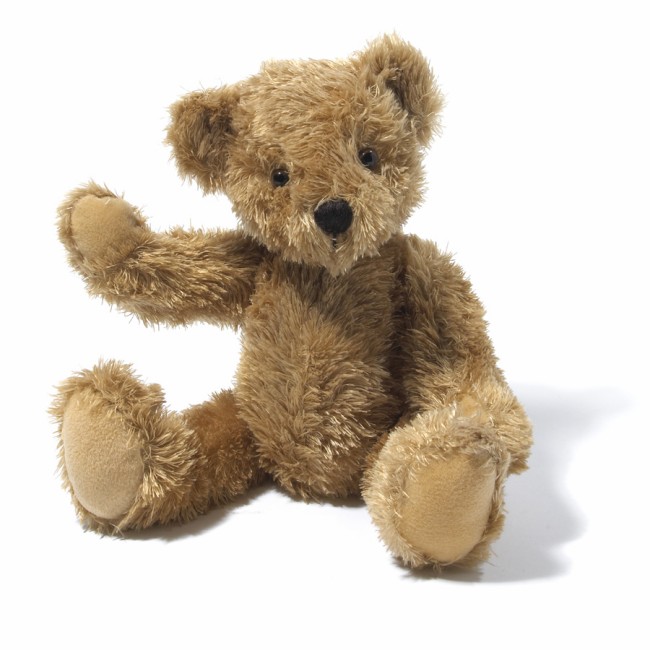Of Blankies, Bears and Loveys
Sometimes we adults get worried about a child's attachment to a favorite blanket or toy. "He's too old for a blankie," people say. "She's got to stop carrying that old thing around," or "It's not the lovey I mind, but she sucks her thumb when she holds her lovey. We've got to wean her of it."
Not every child attaches to a blanket or special object, but for those who do, the love is fierce, deep and necessary. Who are we to break up the relationship?
A child's love for his teddy or blankie is indeed a relationship. The object is part of the child's soul. For some children, they see little difference between themselves and the blankie object. They are both "me." Taking a blankie or lovey away, for short times or forever, can be like ripping a piece of the child's soul apart.
A child who needs a lovey is practicing two wonderful emotional skills - self-comfort and love. We should not get in the way. Instead of worrying about a child's constant need for the love-object, we should rejoice. This child is demonstrating that she is capable of deep love and attachment. For now, the attachment is to a blankie. Years from now, the attachment will be to a person, cause or place on earth. A lovey can bring deep satisfaction and emotional grounding, especially in the early, wild years of swinging emotions.
 Some grown-ups dislike blankies because they see it as a crutch the child uses to hide from fears. Blankies and loveys are often used when a child feels scared. That's OK. Overcoming fears does not mean pulling a comfort object away. Overcoming fears involves taking risks in independent play. Overcoming fears also means trusting a child and giving him time to be ready.
Some grown-ups dislike blankies because they see it as a crutch the child uses to hide from fears. Blankies and loveys are often used when a child feels scared. That's OK. Overcoming fears does not mean pulling a comfort object away. Overcoming fears involves taking risks in independent play. Overcoming fears also means trusting a child and giving him time to be ready.
What about thumb sucking? If thumb-sucking continues late into childhood, we legitimately worry about dental bills. It's fine to encourage a child to put her thumb in the "thumb garage" or "thumb bed" (have her tuck her thumb snugly inside her fingers), but if she's not ready to do that, don't push it. A child will be ready in her own good time. If this means dental bills later on, so be it. Teeth are easier to fix than emotional chaos inside.
Meanwhile, don't blame the lovey. Don't tease the child about the lovey. Don't steal the lovey. Don't lie that "teddy had to take a trip." Don't cut the blankie down in size.
Talented children's author Kevin Henkes, got it wrong in his picture book Owen, a story of a boy and a blankie. Owen loves his blankie and uses it for comfort or superhero cape as his mood changes, but adults in his life think he's too old to bring a blankie to school. His mother comes up with a solution and cuts Owen's blankie into small squares he can use as pocket handkerchiefs. Owen is all smiles in the end, but this is a false ending. Any solution should be the child's. It is their soul we are talking about. A love-object should never be mutilated by cutting it into pieces - unless, of course, that is the child's desire.
How old is too old? There is no upper age limit. Teens and twenties stop carrying their loveys out in public, but many treasure them at home. Gradually, the intense need will fade, and love can be transferred to future partners and family, but a first friend is always good to have around.
Instead of scheming to banish the lovey, respect your child's deep attachment. Maybe you never found a soul-mate in a toy or piece of cloth, but support the child who has. Find and store away a second, identical blanket or object if you can, in case of loss. Label the lovey with "beloved blankie, please return" and give your phone number. We can't keep physical objects 100% safe anymore than we can keep living beings 100% safe, but we can love and respect the relationship as long as it needs to last.
What about you? Did you ever have a deep love for a blanket or toy? Is your child getting "too old" for a blankie? Tell us your story.
